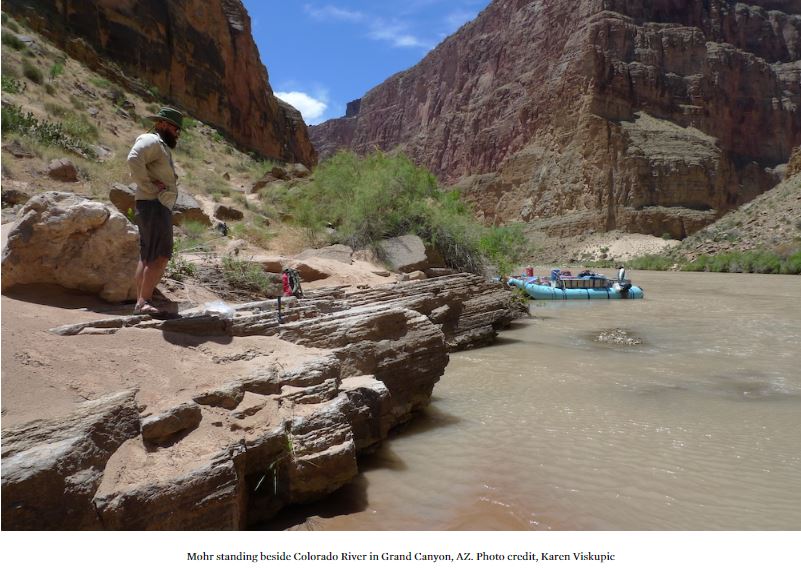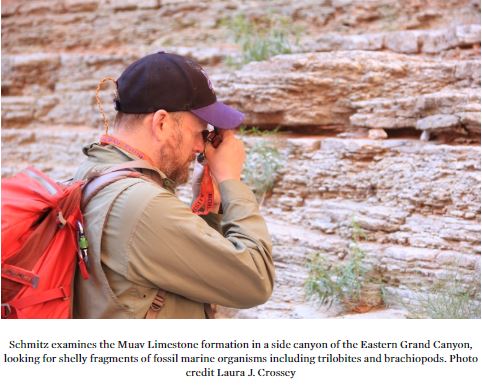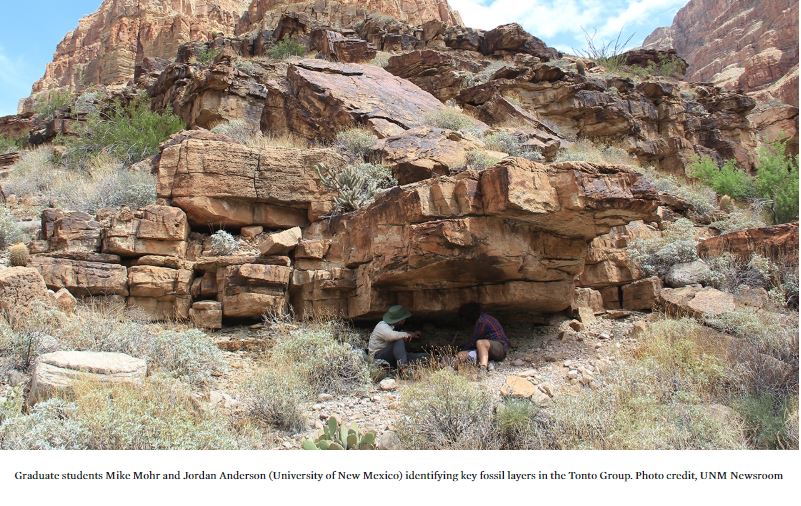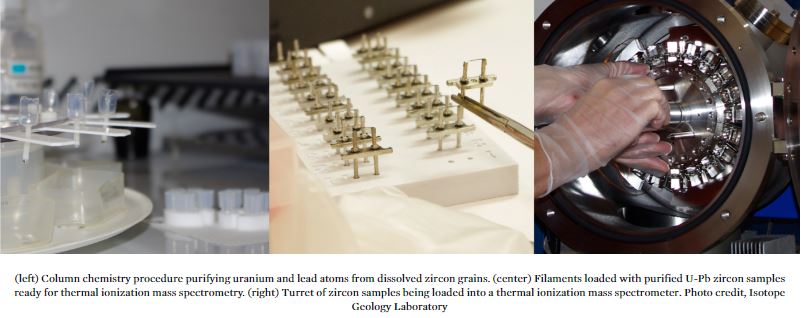
For being silent, sedimentary rocks have a lot to say. Take the Grand Canyon, for example. Carved by the Colorado River for at least five million years, the resulting cross-section reveals a chronological layer-cake record of Earth’s history. For Boise State geosciences professor Mark Schmitz and doctoral student Mike Mohr, the layers of the Cambrian time period are particularly rich.
The Cambrian Explosion is a popular term used to describe a biologic shift chronicled in the sedimentary layers at the beginning of the Cambrian period, around 540 million years ago. In the base of this rock layer are a profusion of preserved fossils with shells, skeletons and body-plans that did not exist prior, such as trilobites and brachiopods. At a glance, it would seem almost as if a single, sudden event in earth’s history sparked this shift. However, Schmitz and Mohr’s research goes much deeper into the rock’s history to reveal another story.

“The term Cambrian Explosion is a bit of a misnomer,” said Schmitz. “It does take a while for all of that evolution to occur but our work highlights yet again that aspects of that evolution are very punctuated. That’s really what we’re trying to understand – just how much of an explosion was it, versus a more progressive change.”
But how does one go about answering the question “what happened in the Grand Canyon 500 million years ago?”
With boats, zircon crystals, chemistry, lasers and collaboration, of course.
Along with researchers from the University of New Mexico, Utah State University, University of Nevada Las Vegas, Denver Museum of Nature and Science and Museum of Northern Arizona, Schmitz and Mohr recently were funded with a three-year, $815,000 grant by the National Science Foundation’s (NSF) Sedimentary Geology and Paleobiology program to study the geochronology of the Cambrian explosion in the Grand Canyon.

The team travels through Grand Canyon on multiple float trips, where researchers like Schmitz and Mohr collect rocks from a particular package of rocks called the ‘Tonto group.”
“The Tonto Group is our natural laboratory. It’s a package of rocks that archive the Cambrian explosion, and it just so happens to be best accessed in the fabulous Grand Canyon,” said Mohr. “So we boat through the canyon to do field work and collect these rocks, which involves a lot of hiking, a lot of exploring.”
The exploration then continues back on Boise State campus in Schmitz’ Isotope Geology Laboratory, where things get really interesting as Mohr and Schmitz measure the age of the rocks.
Sedimentary rocks like sandstone and shale are deposits of older eroded rocks. Within these rocks are tiny crystals of zircon, or as Mohr calls them ‘time-keepers,’ which are extraordinarily tough and durable minerals. These zircon crystals can be dated by measuring their uranium and lead isotopes. Because scientists know how fast isotopes of uranium decay to isotopes of lead, they can use measurements of these isotopes to determine a zircon crystal’s age.

“To date sedimentary rocks, we hunt for the youngest zircon grains within the rock samples to obtain their maximum depositional ages, which is what we call ages of sedimentary rocks. The rock must be younger than the youngest crystal within the rock, so it’s important that we accurately identify the youngest population of zircon grains in the rock,” explained Mohr.
Mohr and Schmitz use two different analytical techniques to date the rock’s zircon crystals. The first method, called Laser Ablation Inductively Coupled Plasma Mass Spectrometry (otherwise known as LA-ICPMS), is a mouthful, but ultimately ‘zaps’ a zircon crystal with a laser to provide a uranium-lead date within minutes. This extremely fast, but less precise first step enables Mohr and Schmitz to date hundreds of zircon crystals from the rock, and basically works as a screening tool to determine which crystals are of the youngest age group to investigate further.
The youngest zircon from these rocks are around 500 million years old, and after being identified via LA-ICPMS those crystals are subject to a second phase of analysis, where they are analyzed with the more expensive and time-consuming, but more accurate and precise Isotope Dilution Thermal Ionization Mass Spectrometry (ID-TIMS) technique.

The combination of these two analytical techniques is one of Boise State’s leaps in advancing the field of geochronology, and one that particularly excited Mohr.
“The age we are measuring is the maximum possible age of that rock, and with the ID-TIMS techniques, we can reduce the uncertainty on those ages to less than half a million years, which for a 500 million year old rock is very precise,” explained Mohr.
“Of course, to a geochronologist or to geologists, a million years is fast,” laughed Schmitz.
“For the Boise State Isotope Geology Lab, there’s always two exciting aspects of our research; one is the geological side of things, the geological implications. The other is advancing the science with new analytical approaches,” said Mohr.

Mohr earned his Masters degree in North Carolina, but was drawn to Boise State by the opportunity to work with Schmitz and a passion to pursue research in uranium-lead geochronology.
Schmitz’ and Mohr’s research group has used this new geochronology to refine the ages of rocks within the Grand Canyon’s Tonto Group, determine the timing of trilobite extinctions during the Cambrian Explosion, and recalibrate part of the Geologic Time Scale – work that was recently published in two scholarly articles in Geology journal.
Go here to learn more about the team’s research.
– By Brianne Phillips